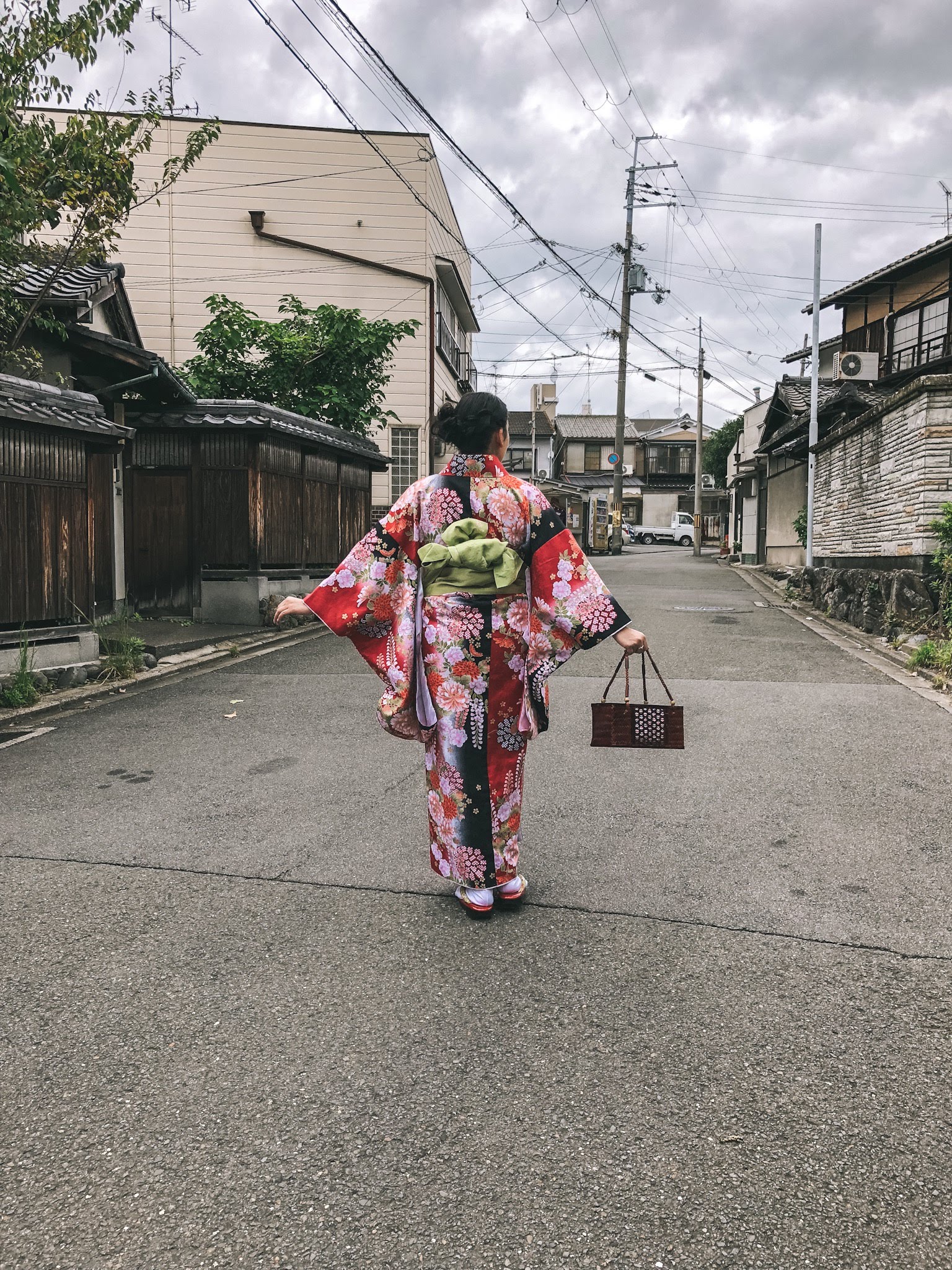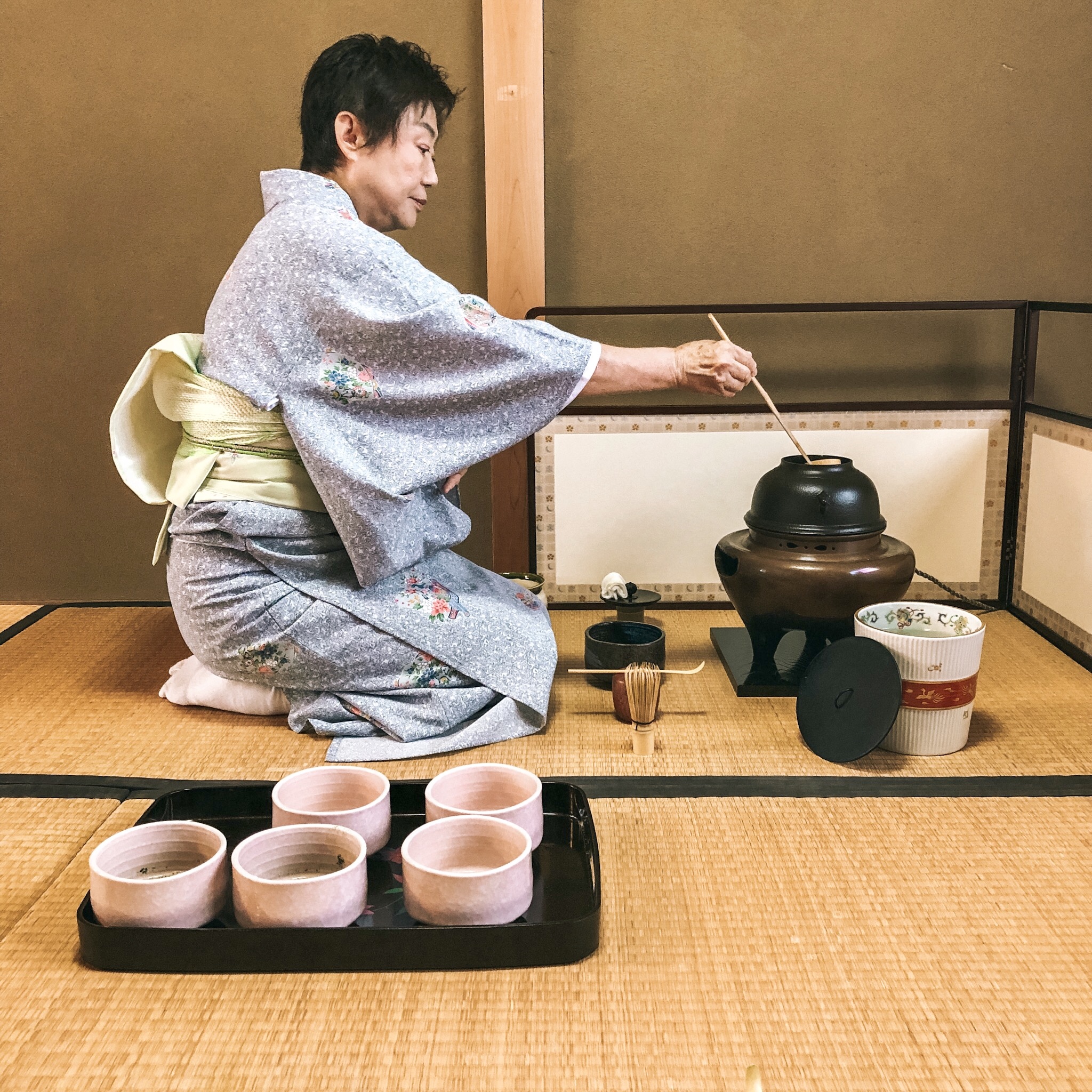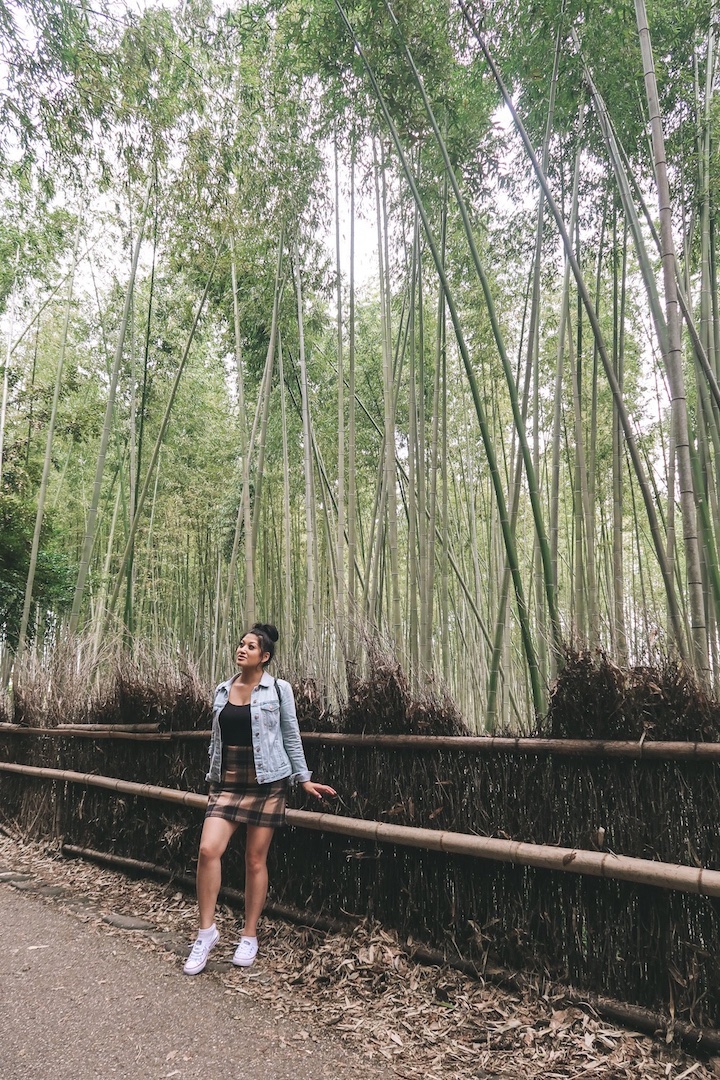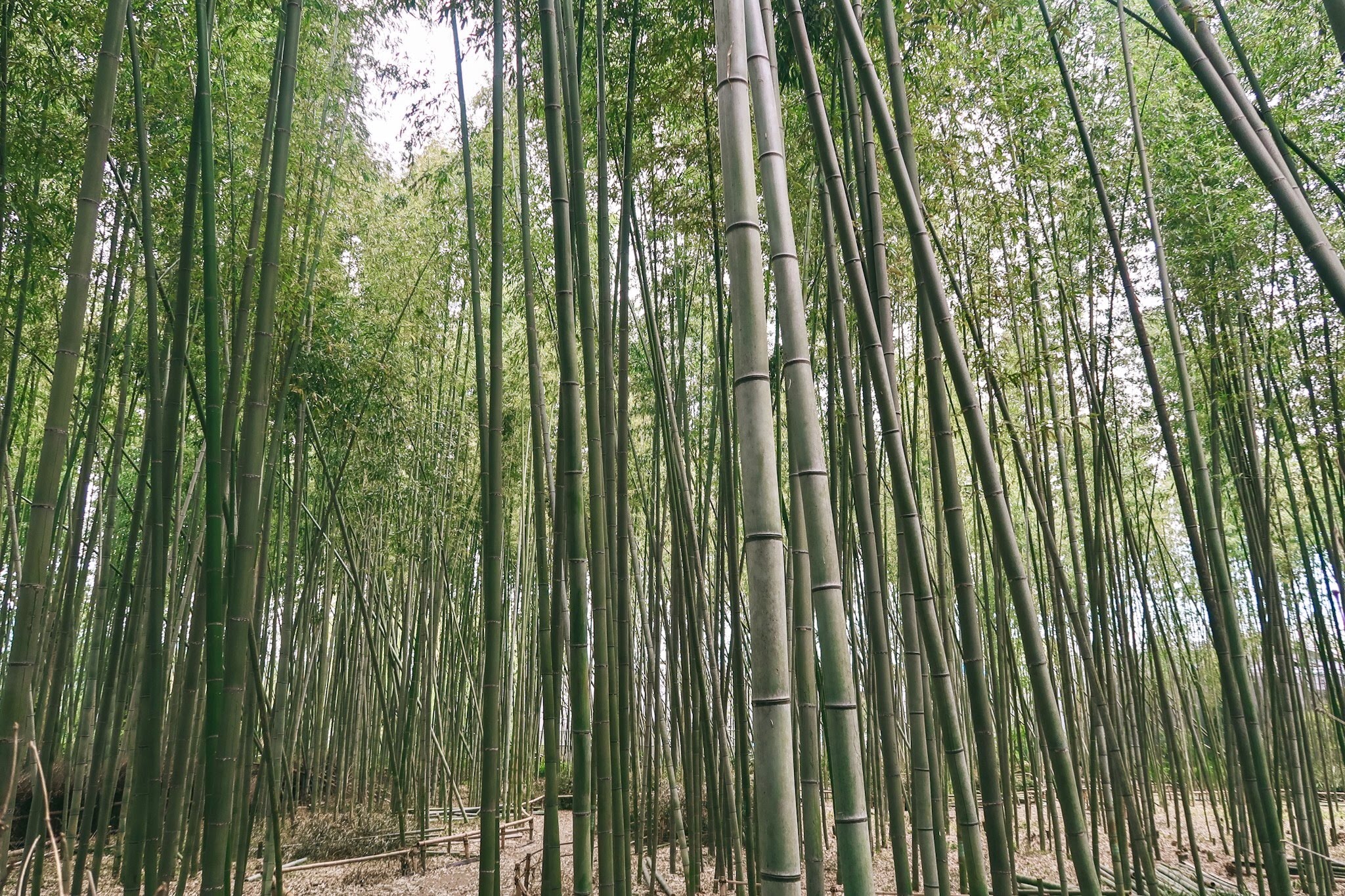Japan Guide: Kyoto
When deciding what cities to explore in Japan, Kyoto should be at the top of your list right after Tokyo.
Formerly known as the capital of Japan, it actually translates to “capital city”. Full of history and rich in culture, Kyoto has it all, the traditional Shinto shrines, Buddhist temples, geishas, Japanese gardens and home to several UNESCO World Heritage sites. We spent 2 days in Kyoto, but if you’re able to spend 3 full days, I would say that’s ideal.
Tea Ceremony:
First thing on our to do list was a traditional tea ceremony. We booked this in advance and had a great experience with Maikoya, conveniently located near the famous Fushimi Inari Shrine. We paid extra to have tea in a traditional kimono, altogether it cost 6,500 YEN, which is about $57 USD.
We got to pick out our pattern/color of the kimono, belt, purse, even down to our slippers. They also provided a menu of different hair styles to choose from and let us pick from a collection of hair accessories to finish off the look. You can also rent a kimono for a day on your own. Rental shops are all over Japan and are easily accessible, pricing can vary depending on where you go, but the average price was about 4,000 YEN ($35 USD).
Dressed for tea time, we are led into a traditional Japanese tea room. Our tea master educates us on the ceremony’s history and proper etiquette. From cleaning and purifying the tools, mixing the powdered matcha, to even drinking the tea, there’s so much detail and grace in every step.
Address: Root-Kawaramachi big. 5f, 407-2 Shimomaruyacho (Kawaramachidori), Nakagyo-ku, Kyoto
Website: Mai-ko.com
Fushimi Inari Shrine:
A shinto shrine devoted to the god of rice and sake, over 10,000 vermillion Torii gates stretch across Inari mountain. Companies and businesses donate money for these gates for good luck. The bigger the gate, the more money was donated. You’ll also notice the owner’s names are inscribed on the back. If your goal is to get to the very top of the mountain, expect at least 2 hours of hiking to get there. Open 24/7.
Cost: Free
Address: 68 Fukakusa Yabunouchicho, Fushimi-ku, Kyoto
Bamboo Forest:
Located in the western part of Kyoto in the Arashiyama district, is the bamboo forest. Surrounded by tall, green bamboo stalks instantly gets you in a peaceful, zen mood. Even though it’s open 24/7, it’s best to come early morning to avoid the big crowds. Explore the forest by foot, bike or a Rickshaw. A popular form of transportation in Asian cities before cars, a Rickshaw is a one or two seater carriage that is powered by someone carrying and pulling the cart.
Cost: Free
Address: Sagatenryuji Susukinobabacho, Ukyō-ku,Kyoto
Togetsukyo Bridge:
Close to the bamboo grove is Togetsukyo bridge. Translates to “moon crossing” bridge, this landmark spans over Katsura river and is surrounded mountains and greenery. We took a short 30 minute ride around the river, but there’s also longer boat ride options available. If you build up an appetite, be on the lookout for other boats selling freshly cooked food and other refreshments like beer, bottled tea and water.
Japanese street food:
Right before heading into Fushimi Inari and the Bamboo Forest, they had an impressive selection of Japanese delicacies: Takoyaki (fried ball-shaped octopus snack), yakisoba (stir fried noodles), grilled crab sticks, wagyu suteki (wagyu steak skewer), taiyaki (fish-shaped cake with red bean or custard filling), dango ( mochi balls), just to name a few. Another place worthwhile to visit for foodies is Nishiki Market. Known as “Kyoto’s Kitchen”, it’s been around for 400 years and specializes in an array of Kyoto’s specialties from savory to sweet.
Gion:
Kyoto’s well-known Geisha and entertainment district. To get transported back to old Kyoto visit the popular street, Hanamikoji. What looks like traditional Japanese wooden houses, “Machiya”, are really a variety of luxury stores, restaurants and long-established tea houses.
Address: Hanamikoji Dori, Higashiyama-ku, Kyoto-shi, Kyoto-fu,
Pontocho:
A short walk from Kamogawa River and the second largest geisha district after Gion. These narrow alleyways are full of restaurants, bars, tea houses, and shops. Certain eateries were very exclusive and only accepted reservations from the locals or you had to know a local to get in. Be warned it took us a bit of time to actually find a place that catered to foreigners. The easiest way to tell is to look for places that offer an English menu.
Sannenzaka, Ninenzaka, Yasaka Pogoda:
My biggest tip for exploring Kyoto, especially the more traditional areas like Sannenzaka and Ninenzaka, is to start early (before the 9am tours arrive). It’s beautiful experience to enjoy those historic streets before the crowds and a must do for photos.
Yasaka Pogoda/Image via SHutterstock.com
Pontocho:
A short walk from Kamogawa River and the second largest geisha district after Gion. These narrow alleyways are full of restaurants, bars, tea houses, and shops. Certain eateries were very exclusive and only accepted reservations from the locals or you had to know a local to get in. Be warned it took us a bit of time to actually find a place that catered to foreigners. The easiest way to tell is to look for places that offer an English menu.
Kiyomizu-dera Temple:
“Pure Water Temple”, is a UNESCO world heritage site and one the most visited temples in Kyoto. We had barely made it just before closing so we didn't get the full the tour, but make sure to visit the love shrine. Two stones are placed about 60 feet apart, If you walk from one stone to the next with your eyes closed it’s believed to bring you luck in love. If you have someone help and guide you from one stone to the next, you will also find love but with outside guidance. Another highlight is Otowa waterfall. Divided into 3 streams, each stream grants a wish: long life, success in school or luck in love. Only choose 1 stream to drink from otherwise it’s considered greedy to drink from all 3.
Cost: 400 YEN
Address: 294 Kiyomizu 1-chrome, Higashiyama Ward, Kyoto
















